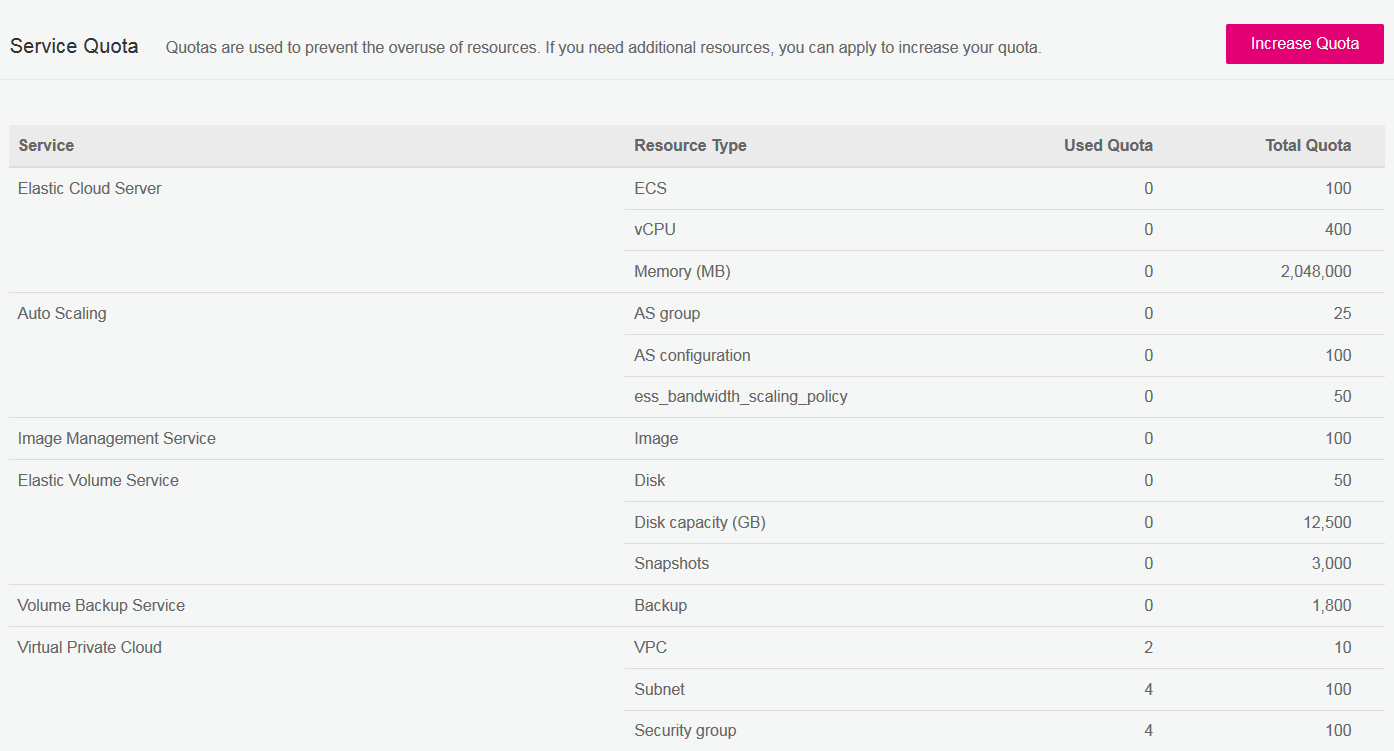Configure Open Telekom Cloud for Cloud Bursting
Create the necessary components in Open Telekom Cloud (OTC) that are required for cloud bursting and then create a cloud bursting scenario.
Obtain the OTC Administrator Credentials
Get the credentials for the OTC administrative user account so that you can later use this information to create a cloud account in Control.
Add an OTC Account
Add an existing OTC Cloud account to Control so that you can create a cloud bursting scenario.
- Login to Control.
- Click the Cloud tab.
- Click Cloud from the Infrastructure menu located on the left-hand side of the web page.
-
Click
 .
.
-
Enter the following to add a cloud account:
- Click Create Account.
Check OTC Account Service Quotas
View your OTC account resource usage and limits.
Quotas are used to limit the number of resources available to users. It is important to ensure you are not exceeding your quota while setting up the resources for cloud bursting. If the existing resource quota cannot meet your service requirements, you can submit a work order to increase your quota. Once your application is approved, your resource quota is updated accordingly and you will be sent a notification.
Create a Virtual Private Cloud
Create a Virtual Private Cloud (VPC) so that you can perform cloud bursting.
Creating a Virtual Machine
Create a Elastic Cloud Server (ECS) using a public image provided by OTC for cloud bursting.
OTC documentation for creating an ECS (virtual machine) can be found at Create an ECS.
Installing and Configuring the PBS MoM on the VM
Install the PBS MoM on the virtual machine and configure the VM per your site's environment.
Log into the VM using the default user "root" and the .pem generated during the creation of the VM.
A startup script is provided during the creation of the bursting scenario. This script is ran after a cloud node is burst and is used to set up the system environment so that nodes burst in the cloud can communicate with the PBS Server. A service specifically designed for cloud instance initialization is cloud-init and is utilized by Control when booting cloud nodes, therefore it must be installed on the VM. For more information about installing cloud-init, refer to the Cloudinit Documentation.
Create an OS Image
Create an image of the virtual machine configured per your site's requirements.
OTC documentation can be found at Creating a Linux Private Image.
Create an OTC Cloud Bursting Scenario
Create an OTC bursting scenario so that PBS execution nodes can be burst in the cloud.
A startup script is provided during the creation of the bursting scenario. This script is ran after a cloud node is burst and is used to set up the system environment so that nodes burst in the cloud can communicate with the PBS Server. Use a cloud-init script for the startup script. For more information about writing cloud-init scripts, refer to the Cloudinit Documentation and Cloud Bursting Startup Script.
Enter information about the OTC resources necessary to burst in the cloud.








